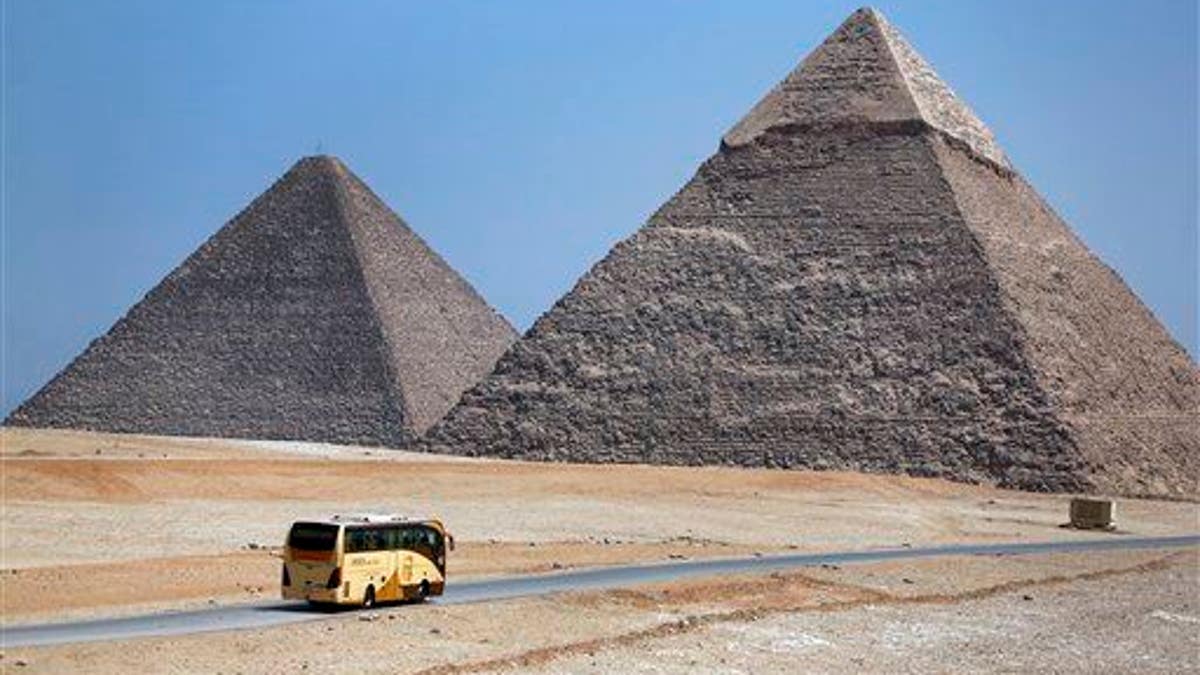
In this Saturday, Sept. 7, 2013 photo, a tour bus passes near the historical site of the Giza Pyramids, near Cairo, Egypt. (AP Photo/Lefteris Pitarakis)
How do you see what's inside an Egyptian pyramid without taking it apart or even "drilling the slightest opening?" With infrared thermography, 3D scans with lasers and drones, and cosmic-ray detectors, scientists said Sunday at a press conference.
Forbes translates the latter technology: Scientists will study "how the cosmic rays that continually zap our planet skitter through the stones." The scanning—which will take scientists several yards deep into the structures—will start at the Bent Pyramid at Dashour, chosen to be first "due to its distinguished and unique architectural design and because it is the first attempt at pyramid construction that has not been carefully studied," Mamdouh Eldamaty, Egypt's antiquities minister, tells Ahram Online of the roughly 4,600-year-old pyramid The scanning will then continue at the Red Pyramid and the two grand Giza pyramids of Cheops and Chephren, the AP reports.
Cheops, also known as Khufu, is the last of the Seven Wonders of the Ancient World still standing, per the Scan Pyramids project site. Thought to be about 480 feet in height originally, History.com notes "it took modern man until the 19th century to build a taller structure" than Khufu.
Scientists have used such cosmic-ray techniques before to scan nuclear reactors ruined at Japan's Fukushima site and to peer inside ancient pyramids in Belize and Mexico.
In fact, scientists "looked for the cosmic-ray signature" of chambers tucked away in the Pyramid of Chephren in the 1960s, says Forbes, "but scanning technologies have gone through a quantum leap since then." The mission begins in November and should last until late 2016.
(Has Queen Nefertiti's lost tomb been found? Go inside the hunt.)
This article originally appeared on Newser: Scientists to Get Inside 4 Pyramids Without Digging
More From Newser
